CINCINNATI — Election Day was surreal for Cincinnati Mayor John Cranley, who voted for the first time in years without seeing his own name on the city ballot.
In a few weeks he will pack up his belongings – including the childhood drawings done by his son, Joseph, which have hung behind his desk for years — and turn over his light-filled City Hall office to Mayor-elect Aftab Pureval.
“It’s bittersweet, obviously. This has been the best job of my life to be the mayor of my hometown,” said Cranley, who is 47. “Even though I’m sad about leaving, it’s probably a good time.”

After nearly 20 years at City Hall, first as a council member and then as mayor, Cranley’s tenure will end on Dec. 31. He was term-limited from running for mayor again.
Democrats appointed Cranley to City Council in December 2000, and he won four elections to keep that seat. After stepping down from council in 2009 to help develop Price Hill's Incline District, Cranley returned to City Hall in 2013 when voters elected him as mayor. Voters re-elected him in 2017.

Each mayor brings a distinct personality to the job. Cranley is known for brashness and a relentless determination. At times this fueled public fights with other city and county leaders that overshadowed any work being done.
Cranley demanded results and political insiders say, in the end, he got them.
“The city of Cincinnati is objectively stronger than when he found it,” said Jared Kamrass, principal at political consulting firm Rivertown Strategies. “I think it’s pretty obvious. The results speak for themselves.”

During his time at City Hall, the Queen City transformed from bleakness and national boycotts following the riots of 2001 to a place that is now growing in population and stature after recently welcoming a third major league sports team – FC Cincinnati.
Over the years, Cranley's critics have accused him of overstepping the boundaries of his office and assuming power that was never intended by the city charter. They said he was sensitive to criticism, too close to the developers he was trying to woo, and unwilling to compromise.
"Each mayor uses their power differently, and Mayor Cranley certainly has used it in the strongest possible way," said Xavier University government relations director Sean Comer. "You walk out of a conversation with him, and you don’t have any question about what he thinks."
Cranley never shied away from his strong opinions, but voters didn't seem to care. They elected him mayor twice, by wide margins.
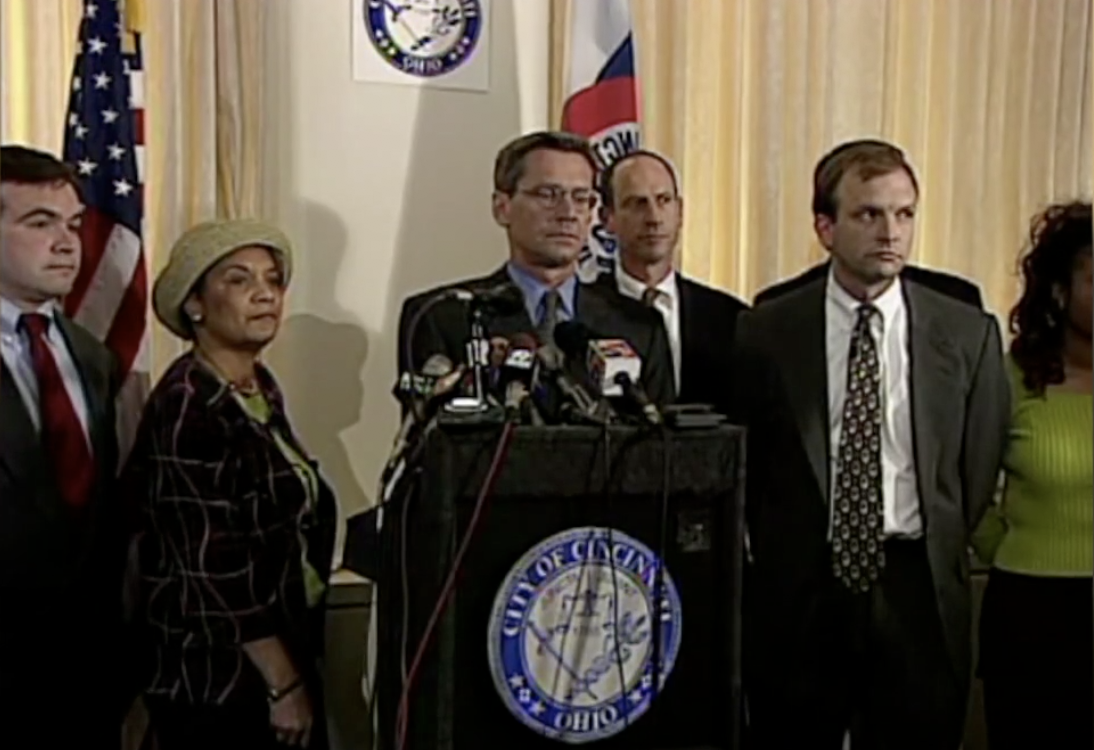
“Mayor Cranley is one of the most impactful and successful mayors of the modern era,” said former mayor Charlie Luken. “His work to grow the city’s population after decades of decline, grow jobs, grow Black business and grow green energy will be his lasting legacy.”
Former chairman of the Ohio Democratic Party David Pepper, who served with Cranley on City Council, agreed.
"From the moment he got to City Hall, through his tenure as mayor, John Cranley always thought big. And went big," Pepper said. "And Cincinnati is the better for it."
WCPO sat down with Cranley on Nov. 8 for an exit interview, allowing him time to reflect on his best and worst times in office.
Mayor-Elect @AftabPureval is fired up and ready to work! Today we sat down for the first of many meetings to come. I am prepared to do all I can to help him transition and succeed in this role. Great things are on the horizon for our city pic.twitter.com/EiLeEarQnh
— John Cranley (@JohnCranley) November 3, 2021
Cranley is most proud of new growth and development in neighborhoods that needed it the most, such as Over-the-Rhine, Price Hill, Madisonville, Bond Hill, College Hill and Avondale.
“Twenty years ago, most people wouldn’t feel safe there in the middle of the day. And now they’re incredibly vibrant locations,” Cranley said. “I feel very, very lucky that I got to be part of a transformation and got to see the fruits of our labor.”
Under his reign, Cincinnati’s population rose in the 2020 Census for the first time since 1950, after years of losing residents to the suburbs.
Cranley often uses the word “comeback” to describe the city’s rebirth and his own political climb. He is running against Dayton Mayor Nan Whaley in the Democratic primary for Ohio governor next May.

“He is a tireless champion for the city of Cincinnati,” said Hamilton County Commissioner Denise Driehaus. “Over the years, he has focused on strategic investments to create the meaningful growth and vitality that have become the hallmark of our city. He cares deeply about our community and the people who live here.”
Among the developments that Cranley is most proud of are the expansion of Cincinnati Children’s Hospital in Avondale, the TQL Stadium in the West End, the completion of Smale Riverfront Park and the expansion of the Wasson Way Bike Trail.

Continuing that growth is the biggest issue facing the city under a new mayor and an almost entirely new City Council next year, he said.
“Because we can’t reduce poverty if we’re not increasing the size of the pie,” Cranley said. “Growth is the key factor, in my opinion, to continuing Cincinnati’s success.”
The heaviness of the job
Being mayor wasn’t all accolades. Cranley has overseen the city during periods of incredible turbulence, tragedy and national embarrassment.
His first test came after the death of Cincinnati firefighter Daryl Gordon, who fell down an elevator shaft at a Madisonville apartment complex in March 2015. Cranley delivered his funeral eulogy.

A stretch of Interstate 71 was named in honor of Cincinnati Police Officer Sonny Kim. The northbound and southbound lanes of I-71 between the Dana Avenue exit and the Montgomery Road exit is now the Officer Sonny L. Kim Memorial Highway.
“That was the first time I internalized that I was, in fact, the mayor,” Cranley said. “That was the moment I felt the true heaviness of the job. And it was very, very sad.”
More sadness would follow with the deaths of Cincinnati Police Officer Sonny Kim, who was killed in an ambush attack in June 2015, and public services worker LeRoy Garrison Jr., who was electrocuted in June 2019 while running lines for a police surveillance camera.
“He’s a steady hand when times are tough,” Kamrass said. “He’s a strong leader and it’s the kind of thing that is important when you’re dealing with a crisis.”
The tragic death of 16-year-old Kyle Plush put Cincinnati in the national spotlight in April 2018. He suffocated in the backseat of a minivan after a third-row seat collapsed on him. His death exposed major problems at the city’s 911 center, which were addressed in the city’s $6 million settlement.
Months later the Queen City drew national attention again during a mass shooting in September 2018. A gunman entered Fifth Third Center and fired dozens of rounds, killing three people and wounding two others.
Cranley arrived on the scene as soon as police gave him the all-clear to thank officers for their quick response and courage.
“In good times, they want to hear from the mayor, and in bad times they want to hear from the mayor,” Cranley said. “In those moments they don’t want to hear politics. They just want to hear comfort, pride. Something deeper. Transcendent, spiritual.”

CINCINNATI. Nov. 12, 2016. Demonstrators organized by Black Lives Matter Cincinnati and people protesting President-elect Donald Trump marched to Washington Park in Over-the-Rhine. Earlier in the morning, Judge Megan Shanahan declared a mistrial in the case against former University of Cincinnati police officer Ray Tensing, who killed Samuel DuBose, because jurors could not reach a unanimous verdict.
Cranley helped keep the peace after the shooting death of Sam DuBose by former University of Cincinnati Police Officer Ray Tensing as DuBose was sitting in his car during an off-campus traffic stop in July 2015. Fears of riots gripped the city when the video of the shooting was released, and also after the deadlocked jury verdict at trial.
In the wake of the COVID-19 pandemic, Cranley made the tough decision to furlough 1,700 city employees to temporarily stabilize the budget in March 2020.

Months later came the protests for social justice, which happened in cities across the nation in May and June of 2020.
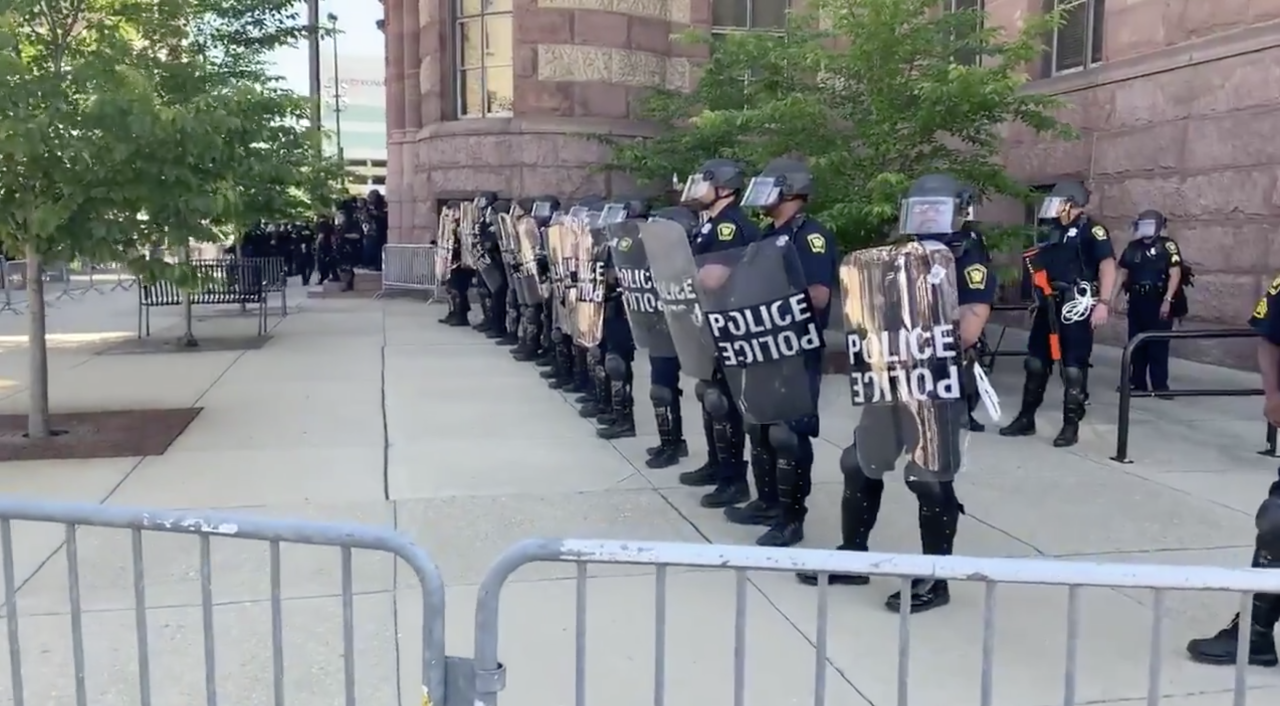
There was also plenty of scandal inside the City Hall building: the Gang of Five text message scandal involving five council members in 2018, and the FBI’s arrest of three council members in 2020 on public corruption charges.
Former councilwoman Tamaya Dennard pleaded guilty and is serving 18 months in prison. Suspended council members Jeff Pastor and PG Sittenfeld are both awaiting trial on corruption charges.
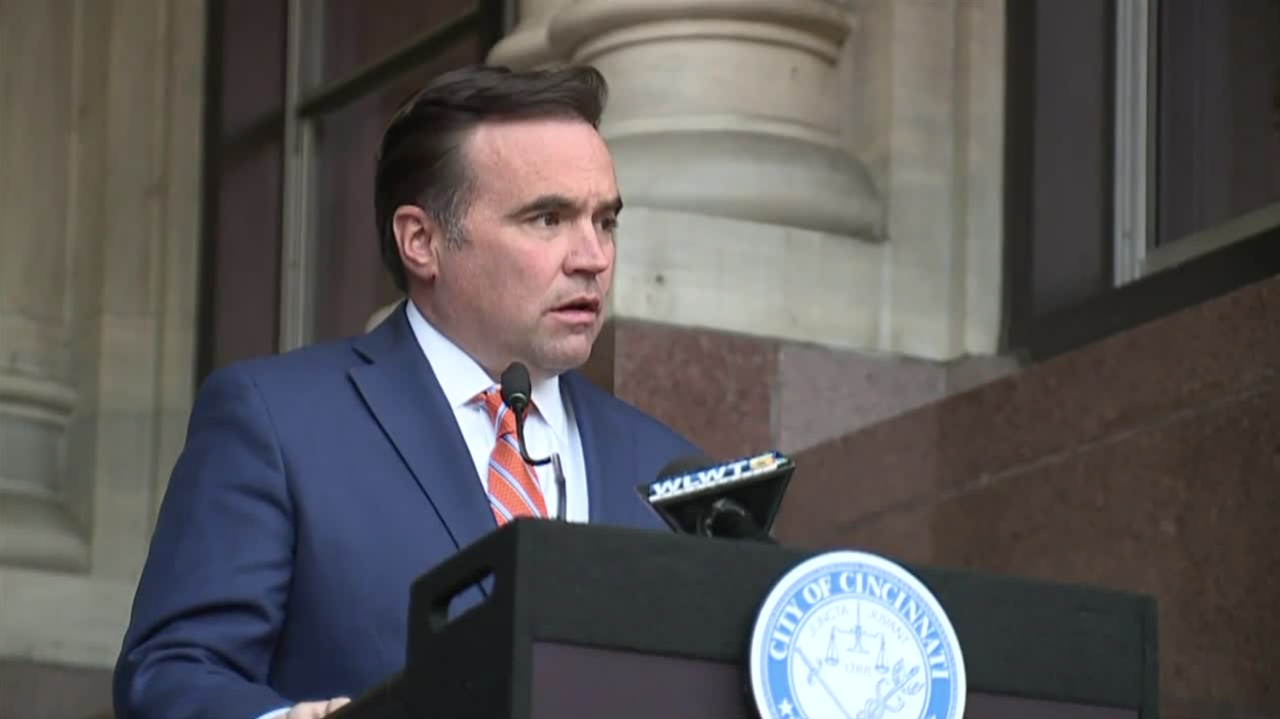
“When people take money for public favors, they make us all look bad,” Cranley said. “To see people indicted that are in the same building as me is very, very upsetting.”

Cincinnati Mayor John Cranley and City Manager Harry Black
But Cranley said the most challenging time of his tenure came during the spring of 2018 when his relationship with his hand-picked city manager, Harry Black, soured in a very public way.
“It was the hardest six weeks of my time here, for sure,” Cranley said. “There’s plenty of blame to go around. I could have handled things differently, too … but fundamentally you can’t have a manager who has lost the faith of the mayor. I believe we should fix the charter not to allow a situation like that happen again.”
After weeks of drama, Black resigned minutes before an April 2018 meeting in which a majority of City Council had pledged to fire him. Black's total buyout from the city was worth more than $600,000.
What will Cranley be remembered for?
WCPO asked political insiders and local leaders about Cranley’s legacy. To sum up, in a few sentences, what he will be remembered for.
Hamilton County Commissioner Alicia Reece helped to appoint Cranley in 2000, and they served together on City Council through the months of civil unrest in 2001.
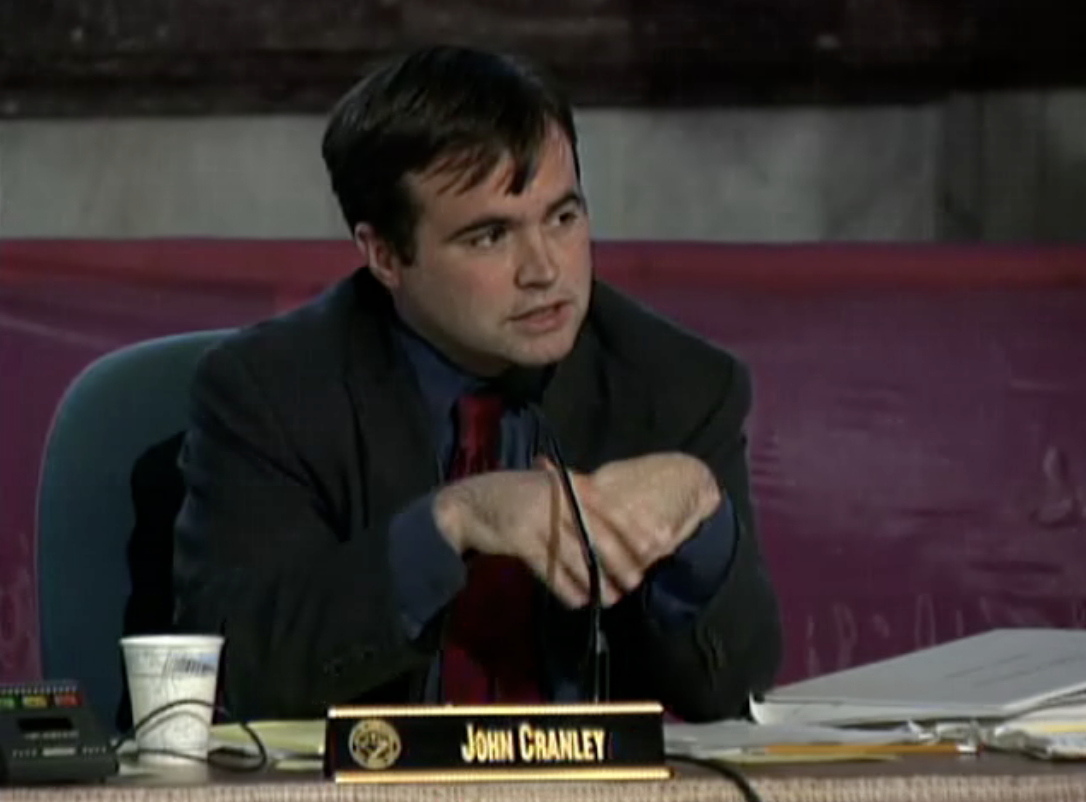
"John and I have been through the fire and the prosperity together, the fire and the rebuilding ... after we had to come through the unrest," Reece said.
She worked with Cranley on the Interstate 71/Martin Luther King, Jr. Drive interchange project, the redevelopment of Roselawn Park into the Cincinnati Reds Urban Youth Academy, and most recently on the Cincinnati Black Music Walk of Fame, which is scheduled to open next July.
"When I think of John Cranley, I think of someone who loves the city and who will stick with it," Reece said.
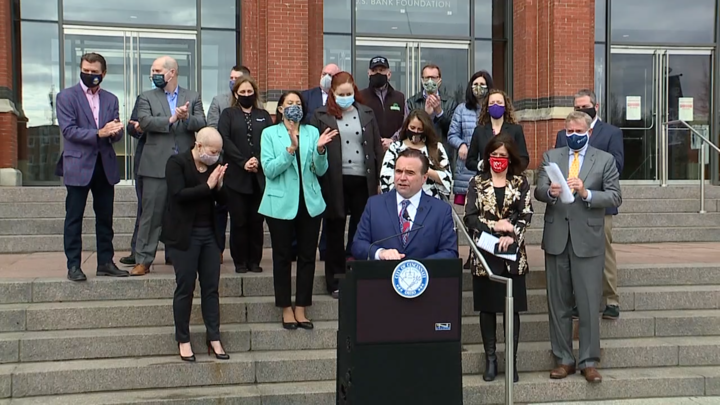
Councilman Christopher Smitherman specifically thanked Cranley for his Hand Up Initiative to reduce poverty and for saving the King Record building in Evanston.
“His passion for result-driven leadership beyond Downtown has helped with significant population growth while other cities have declined,” Smitherman said. “This was done while increasing economic participation with Black and brown people.”

Cincinnati Mayor John Cranley on March 17 spoke to representatives of the city's community-development corporations at an invitation-only symposium. The meeting was to help the groups assess efforts, successes and challenges in community development in the city. (File photo)
Comer, of Xavier University, said Cranley’s biggest wins were improving the city’s transit system, developing the Wasson Way Bike Trail and bringing FC Cincinnati here.
“He was deeply involved in the effort to pull back the city earning tax, increase the sales tax countywide and to improve our transit,” Comer said.
To political strategist Kamrass, among Cranley’s greatest achievements were fixing the city’s pension crisis, reforming SORTA, reversing 15 years of city population loss, and reduction of poverty.
“You have to meet the moment that you’re coming into. And I think John’s personality is absolutely right for the moment he came into (as mayor) on the heels of the Great Recession with a lot still in front of us in terms of work that still had to be done,” Kamrass said.
Cranley also spearheaded the city’s building of the largest municipal solar panel field in the country in Highland County, which will allow the city to be carbon neutral.
"From banning racial profiling and hate crimes based on LGBTQ status ... to going for broke on creating solar energy, to creating new jobs and paying our public servants livable wages, John sets ambitious goals and then gets them done," Pepper said.
Former councilman Kevin Flynn highlighted Cranley’s emphasis on first responders.

“The city went from annually threatening to lay off cops and firefighters, ‘code zeros’ for our police where no officers were available to respond to calls for service and ’brown outs’ in our fire department where entire fire companies were non-operational on a daily basis, to restoring police and fire in his first couple of years as mayor,” Flynn said.

But Cranley is also well-known for his strong-willed personality, which often led to clashes, even with his allies.
“The mayor and I have not always agreed, and our disagreements led to many ‘spirited’ late-evening discussions,” Flynn said. “When we disagreed, we sometimes disagreed loudly, but by the end of our discussions we were usually joking and laughing with each other.”

Councilman David Mann had this to say about Cranley: “As I warn folks, be prepared when you meet with him, as he will know more about the subject than anyone else in the room. He is very smart, always prepared, an effective advocate, clear on his goals and quite principled in his work.”
Even Cranley admits now, with the wisdom of self-reflection, that he could have acted with more patience and perhaps taken life a little less seriously during his time at City Hall.
“I’m a result-oriented person. I can be impatient at times. Or many times,” Cranley said, laughing. “Certainly, there are times I could have taken things less seriously. That is a good way to put it.”





